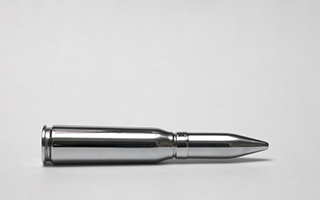So there I was looking for inspiration for this next article – there are just some days when nothing creative flows anywhere near my brain. I first thought I should speak of how you ramp up your revenue with better people-management or enhanced marketing strategies, or about how different life is for salon operators who start working on their peak season plans while the sun is hottest and the mosquitoes are still biting in states like Minnesota and Wisconsin. Then it hit me: from two of our recent Sun is Life® webinars, I recalled the reactions of attendees who said that they in essence needed some “short cuts” for repairing their ailing salons.
In the salon consulting business, if a consultant is honest – and I’ve found that honesty combined with competence works best for my clients – he will tell you that there is no silver bullet for slaying the demons of past sales losses and diminished profits. Continuing with the theme of honesty, the truth is that whatever the practices utilized by salon management that resulted in declining performance are most often not recognized by a consultant after a few weeks of guidance.
When starting a new salon consultation, members of my team set the minimum time period at four months. We do that because having been tanning salon consultants for 23 years, we know that “selling culture” and owner attitudes toward staff are usually not things that can be immediately redirected. If an acrylic shield breaks or a bed needs new lamps, you can pick up the phone and have replacements quickly. Repairing or replacing owner/manager attitudes takes some work and a lot of patience on both the consultant’s part and that of the client.
What’s difficult in transitioning attitudes is getting everyone in management or ownership to appreciate the value of a single team member versus the value of a shiny new tanning bed. One can easily calculate the ROI for a new sunbed based on the track record of equipment for sessions and revenues. Wouldn’t it be wonderful if staff had a permanent “effort and attitude” meter embedded in their foreheads, or linked online to some database that reported the relative value we’re getting for our payroll expenses? Just think if you could look up any team member when you’re not in the salon and easily figure out who’s a keeper and who’s not on a minute-to-minute basis. Unfortunately employees, as well as owner/manager attitudes and efforts are messy and unpredictable.
I’ve seen the lowest sales performer blossom to unheard of sales results after a simple adjustment in managerial approach. And that doesn’t happen overnight. Every employee is a “work in progress” – even the best need adjusting and inspiration from time to time. But maybe it’s the boss who needs the biggest adjustment. It’s finding traits like empathy, patience and let’s not forget listening, that helps managers become leaders. You can fix what’s wrong with a tanning system through diagnostics or determine that it has simply shut down. Not so with humans. With them, your real diagnostic method starts with listening. It’s kind of like the doctor who uses a stethoscope to hear if your heart is performing correctly; without that device, he’s just making a guess. Guessing about the performance of a heart is not healthy – of that fact I have firsthand knowledge!
When we start with a new client, I look at the numbers with the staff and then take out my “stethoscope” (my patience and listening skills) and form a diagnosis, prognosis and treatment plan. In the 23 years of our consulting model, I’ve only had two salon companies (one two-salon and one four-salon chain) that have not reversed their downward trend.
A successful tanning facility is one that fosters a culture of excitement and passion with a team that collaborates with salon guests to help them look good and feel great. This starts with a collective desire amongst senior management and the belief that in both the long and short runs, uninspired staff cost more than equipment.

